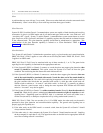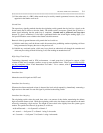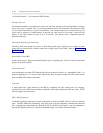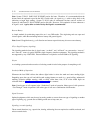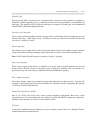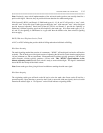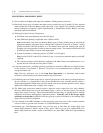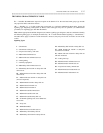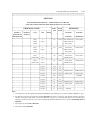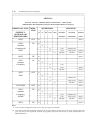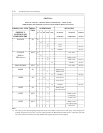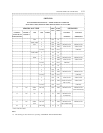C-16 TRUNKING TERMS AND CAPABILITIES
_ ___________________________________________________________________________________________________________________________
_ ___________________________________________________________________________________________________________________________
_ ___________________________________________________________________________________________________________________________
SUGGESTIONS AND HELPFUL HINTS
(1) Given a choice of multiple trunk supervision methods—E&M generally works best.
(2) Historically, those types of features and trunk services provided by class 5 analog COs have required
either Ground Start or Reverse Battery trunk supervision. Class 5 digital CO’s generally emulate their
analog counterpart and require a digital implementation of Ground-Start, Reverse Battery, and Loop
Start trunk supervision methods.
(3) With regard to Special Access Connections:
• Wink Start is the most frequently used start-dial signal
• Only E&M lead signaling is applicable at the 4 ESS toll office.
Note: Ground Start, Loop-Start, and Reverse Battery types of analog facilities may be used with the
appropriate signaling converters and D4 channel units. Whenever System 85 or Generic 2 analog
ground start trunks (SN230) terminate on a D4 channel bank—then the channel bank must be
equipped with a ring generator in order to detect incoming seizure. The DIMENSION PBX with LC08
ground start trunk circuits do not have this requirement.
• In order of preference—addressing may be (1) DTMF, or (2) dial pulse.
Note: System 85 (R2V3 and R2V4) or Generic 2 may, as a special development option, provide MF
signaling.
• The customer premises switch should be configured with ARS software and administered so as to
prevent intra-lata calls from accessing the toll switch.
(4) Loop Start supervision is available with analog facilities for DIMENSION PBX and over digital facilities
for the System 85 and Generic 2. However, Loop Start is not recommended due to potential trunk
lockups on tandem calls.
Note: The only satisfactory way to use Loop Start Supervision is to administer trunk-to-trunk
restrictions so that incoming calls cannot tandem to loop start facilities.
(5) Establishing end-to-end trunk supervision is assured if the ports are of the same type and appropriate to
the two switches; e.g., Ground-Start at the CO and Ground-Start at the customer premises switch, a
digital implementation of E&M at the toll office and the same at the customer premises switch. Proper
application of E&M supervision is slightly more complex.
(6) The E&M trunk supervision method provides improved answer supervision over other methods.
However, E&M supervision may be implemented using a variety of start-dial signals, and provide
support for a variety of services. This increased flexibility and the variety of signaling choices available
complicate the decision making/proper application process. Generally, one of the dc-type signals
(wink-start or delay-dial) is preferred since they provide a positive indication to start sending digits
and provide for faster call completion.
(7) Calls destined for the PBX attendant or other answering group may arrive at the customer premises
switch via either (1) ground start CO trunks, or (2) E&M automatic-in tie trunks.
(8) Incoming type ‘‘Dial Repeating trunks’’ may pass four, five, or more than five address digits. Four
address digits function to define a station on that ‘‘main’’ PBX or on one of its satellite PBXs. Five
address digits function to define a station on that PBX or any other PBX within the 5-digit numbering
plan.



